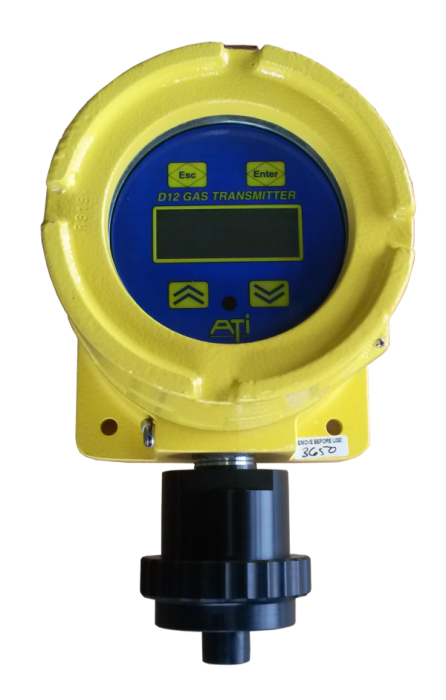Ensuring safety and efficiency in industrial environments requires reliable gas detection systems. ATI’s D12 Toxic Gas Transmitter is a cutting-edge solution designed to meet these critical needs. Let’s delve into its features, benefits, and customizable options to understand how it can enhance workplace safety and operational efficiency.
Advanced Features for Comprehensive Gas Detection
The D12 Toxic Gas Transmitter boasts an array of advanced features that make it a standout solution:
- LCD Graphics Display: Gas concentrations are prominently displayed for easy reading. The display also provides alarm indication and menus for setup, with a backlight available in 3-wire mode.
- Internal Data Logger: Measured gas values are stored at user-defined intervals and can be recalled on the LCD display or downloaded using the MODBUS™ interface.
- Non-Intrusive Operation: Calibration, alarm setup, and other functions can be accessed using a magnetic tool without opening the enclosure, ensuring non-intrusive operation.
- Password Protection: Program settings can be protected by a user-selectable 4-digit password, allowing only authorized personnel to make changes.
- Modular Electronics: The electronic assembly plugs into the power supply board, facilitating easy removal for maintenance or replacement.
- Explosion-Proof Enclosure: Certified for hazardous areas, the cast aluminum housing is rated for Class 1, Division 1, Group B, C, D locations.
- Scalable 4-20 mA Output: The output range is programmable within sensor boundaries, offering flexibility in output configuration.
- Three Internal Alarm Relays: Programmable for various functions, including set point, hysteresis, and on/off delays, with a remote reset feature.
- Analog and Relay Output Simulation: Allows for complete loop testing and activation of local alarm devices for maintenance and calibration.
- Serial Communication Interface: Available with HART™ or MODBUS™ protocol, supporting access to concentration and status information.
Customizable Options for Diverse Applications
The D12 Toxic Gas Transmitter offers several customizable options to tailor it to specific application requirements:
- Sensor Module: Choose from a wide range of gas sensors to detect toxic or combustible gases.
- Transmitter Type: Electrochemical sensors for toxic gases or combustible gas sensors, with or without the optional alarm board.
- Sensor Holder Style: Integral or remote sensor mounting options for flexibility in installation.
- Digital Output: Select from standard 4-20 mA output, HART™ interface, or MODBUS™ interface.
- Accessories: Calibration adapter, flow cell assembly, sensor splash guard, and remote interconnect cables for enhanced functionality.
Specifications for Reliable Performance
The D12’s specifications ensure accurate and reliable gas detection:
- Sensor Type: Electrochemical for toxic gases and oxygen, catalytic bead for combustible gas.
- Range: User-adjustable within sensor limits.
- Accuracy and Repeatability: Maintains precise readings for consistent performance.
- Analog Output: Loop-powered 4-20 mA output for easy integration.
- Power Requirements: Flexible voltage input options for versatile installation.
Conclusion
In conclusion, ATI’s D12 Toxic Gas Transmitter is a comprehensive solution for gas detection in industrial environments. With its advanced features, customizable options, and reliable performance, it provides unmatched safety and efficiency benefits. Investing in the D12 ensures peace of mind, knowing that your facility is equipped with a state-of-the-art gas detection system capable of meeting the most demanding requirements.
For businesses prioritizing safety and operational excellence, the D12 Toxic Gas Transmitter is the ideal choice to safeguard personnel, assets, and the environment.
You can find this product here: https://www.oxidationtech.com/d-12-toxic-gas-monitor.html#970=

